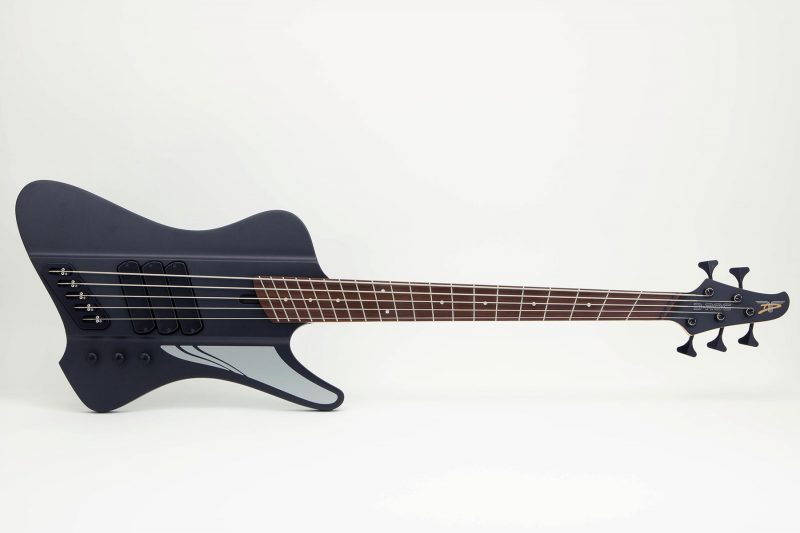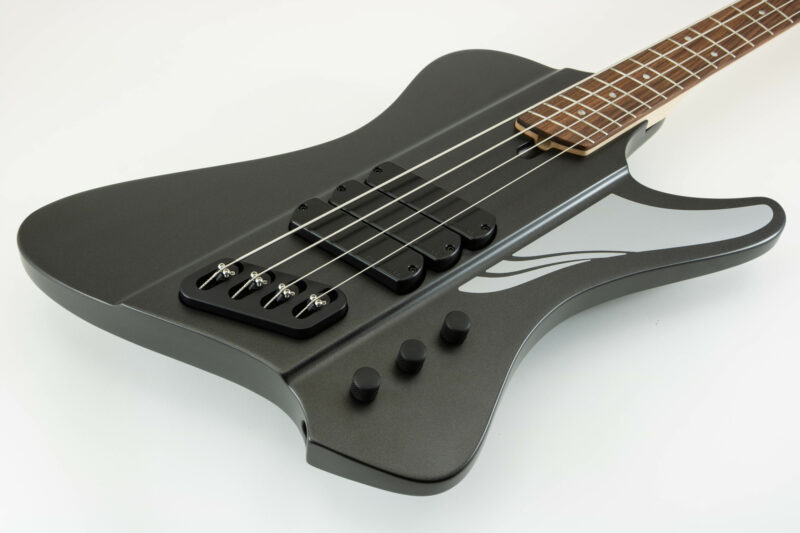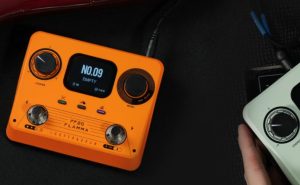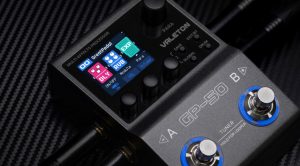A Modern Take on a Classic Aesthetic
The Gibson Thunderbird, introduced in 1963, was designed to be a sleek, powerful rock bass. It was meant to rival Fender’s growing dominance, offering a deep, resonant tone with a striking body shape. However, despite its popularity in rock, punk, and metal circles, the Thunderbird had several well-known flaws:
- Neck dive: The long, extended body and headstock-heavy design made Thunderbirds notoriously unbalanced.
- Inconsistent clarity: The short 34” scale and pickup placement resulted in a muddy low end, especially on the E and B strings in drop tunings.
- Build and reliability issues: Many players have complained about fragile headstocks, neck joints, and tuning instability.
Dingwall’s D-Roc Standard was designed to take everything that worked about the Thunderbird concept—the aggressive tone, the striking looks, the powerful presence—and fix its flaws with modern engineering and ergonomic design.

Unlike the Super P and Super PJ, which are refined evolutions of the legendary Precision Bass, the Dingwall D-Roc Standard isn’t tied to any one historical bass design. Instead, it draws inspiration from the radical, offset shapes of vintage Thunderbird-style basses while integrating modern Dingwall innovations to solve some of the issues that have long plagued those classic designs.
The result? A bass that delivers massive tone, balanced playability, and futuristic ergonomics—without the drawbacks of its predecessors.
What Makes the D-Roc Standard Special?
The D-Roc Standard is an offset-body bass with a multi-scale fanned-fret design, using the same principles that make Dingwall’s other basses so precise and tonally balanced. While it shares the aesthetic spirit of the Thunderbird, it is a completely new instrument, built with superior balance, sustain, and articulation.
Solving Neck Dive
One of the biggest improvements over the Thunderbird is the D-Roc’s balanced design. By strategically redistributing weight in the body and keeping the headstock small, the D-Roc eliminates the dreaded “neck dive”, making it significantly more comfortable to play, even over long sets.
Multi-Scale Neck: Improved Low-End Clarity
Just like Dingwall’s other models, the D-Roc Standard uses a fanned-fret, multi-scale design, meaning:
- B string (if applicable) stretches to 36.25” for tight, punchy lows.
- G string is shorter (32”), keeping the feel comfortable and natural for high-register playing.
- Each string has optimized tension, preventing floppy low strings or overly tight high strings.
This means the low end is clearer and more focused, making the D-Roc ideal for downtuned rock and metal, where traditional basses often struggle with definition.

Pickups & Configurations: The Heart of the D-Roc’s Sound
The D-Roc Standard comes equipped with a set of passive Dingwall FD-3N neodymium pickups. These pickups are a major part of what gives the D-Roc its powerful, punchy, and aggressive tone.
FD-3N Pickups: What Do They Offer?
- Neodymium magnets are stronger than traditional Alnico or ceramic magnets, resulting in increased output, clarity, and definition.
- The FD-3N pickups have a naturally aggressive midrange, making them perfect for rock, metal, and hard-hitting genres.
- They handle distortion and overdrive exceptionally well, cutting through a mix with authority.
Pickup Configurations & Tone Variety
The D-Roc Standard is available in the following pickup configurations:
3-Pickup Version
- Offers a massive range of tonal options by letting you blend different pickups together.
- Switching System: The 4-way rotary pickup selector gives you:
- Bridge pickup solo – Tight, punchy, and aggressive, great for cutting through dense mixes.
- Bridge + Middle pickup – A balanced, warm growl with plenty of bite.
- Neck + Middle pickup – A thicker, rounder tone, great for classic rock vibes.
- All pickups together – A massive, full-range sound that works well for fingerstyle playing.
Whether you’re looking for deep, thunderous lows or a snarling, aggressive midrange, the D-Roc’s pickups deliver a modern take on vintage rock tones—but with more clarity and flexibility.
Who Is the D-Roc Standard For?
If you’re looking for a bass that feels and sounds massive, without the downsides of traditional rock bass designs, the D-Roc Standard is an outstanding choice. It’s ideal for:
- Rock and metal players who need tight low-end and punchy mids.
- Players who love Thunderbird-style aesthetics but hate the typical balance issues.
- Bassists who use overdrive/distortion and need a pickup system that stays articulate even under heavy gain.
- Anyone needing a bass that excels in drop tunings or extended range without getting muddy.
Pros and Cons
Pros:
✅ Thunderbird-inspired looks with modern comfort and balance
✅ No neck dive—well-balanced, lightweight design
✅ Multi-scale fanned frets = better tension, tuning stability, and clarity
✅ Neodymium pickups provide high-output, aggressive rock tones
✅ Passive electronics, yet full of tonal flexibility
Cons:
❌ Not ideal for vintage-style, mellow bass tones—it’s built for power and punch.
❌ Fanned frets take a small adjustment period if you’re new to them.
❌ Limited availability—Dingwall basses are highly sought after, and stock can be scarce.
Final Thoughts
The Dingwall D-Roc Standard is one of the best-designed modern rock basses available today. It takes the bold, powerful aesthetic of the Thunderbird, fixes its balance issues, and adds multi-scale precision and high-output neodymium pickups for a bass that sounds as aggressive as it looks.
For players in rock, punk, metal, and alternative genres, the D-Roc delivers massive tone, effortless playability, and a modernized approach to the classic “big-body rock bass” formula. If you’ve ever wished for a Thunderbird that actually balances well and plays effortlessly, this is your answer.





